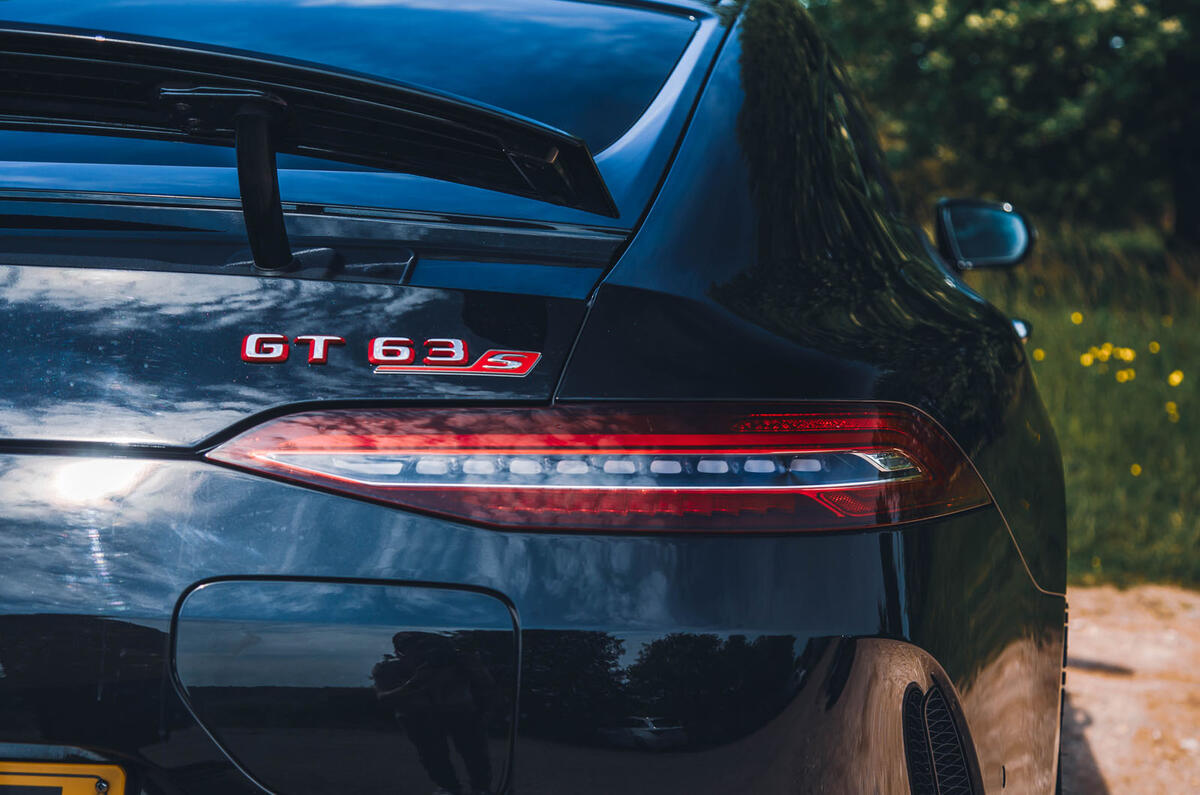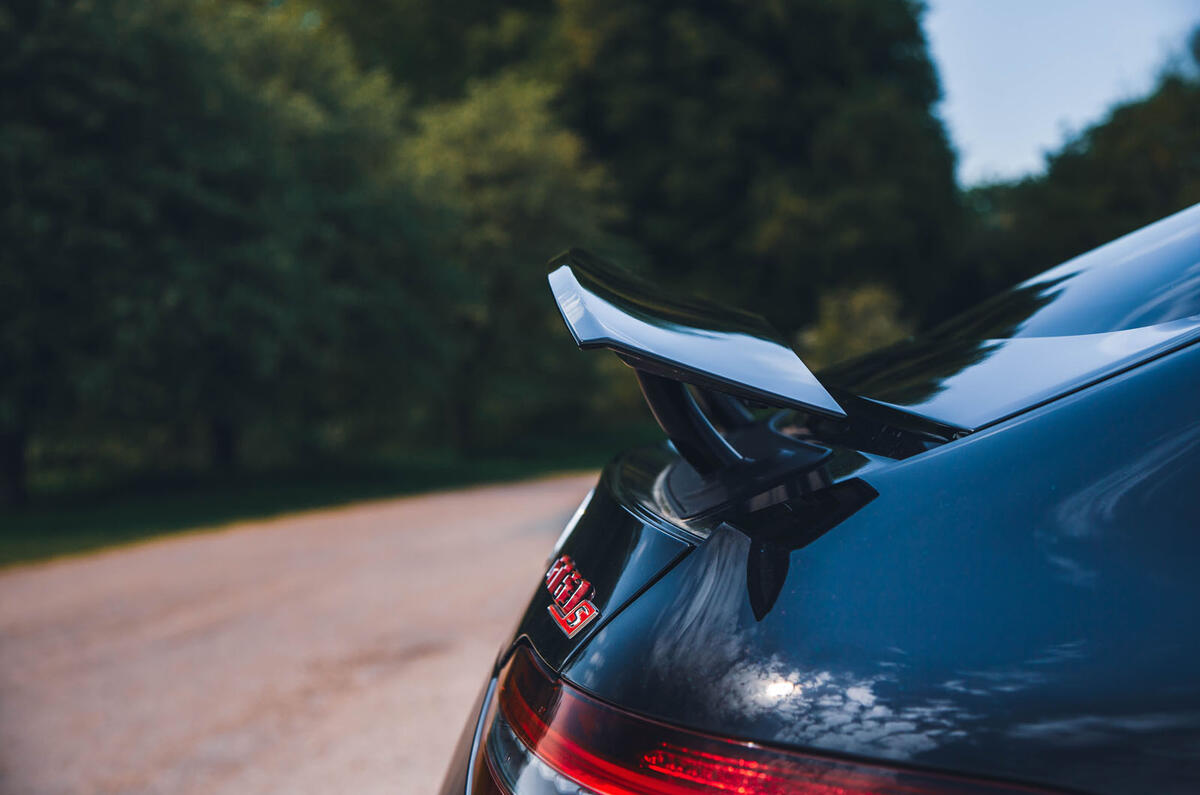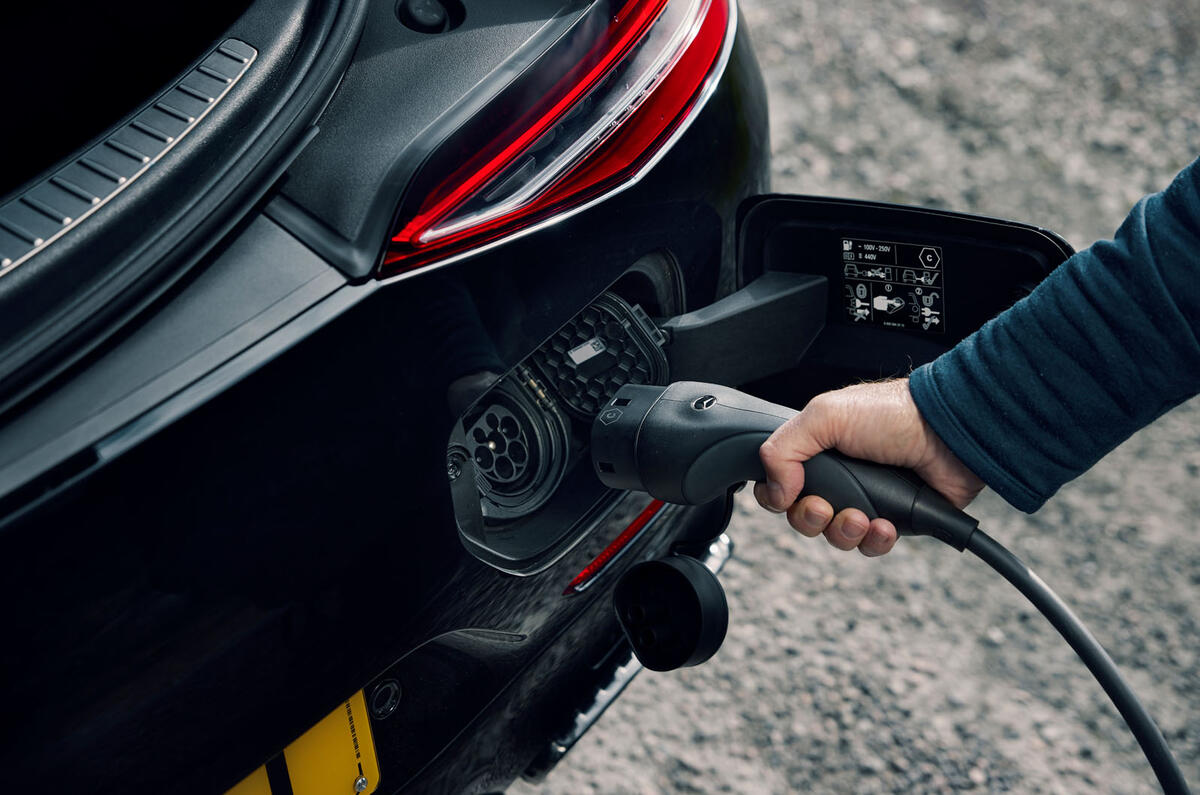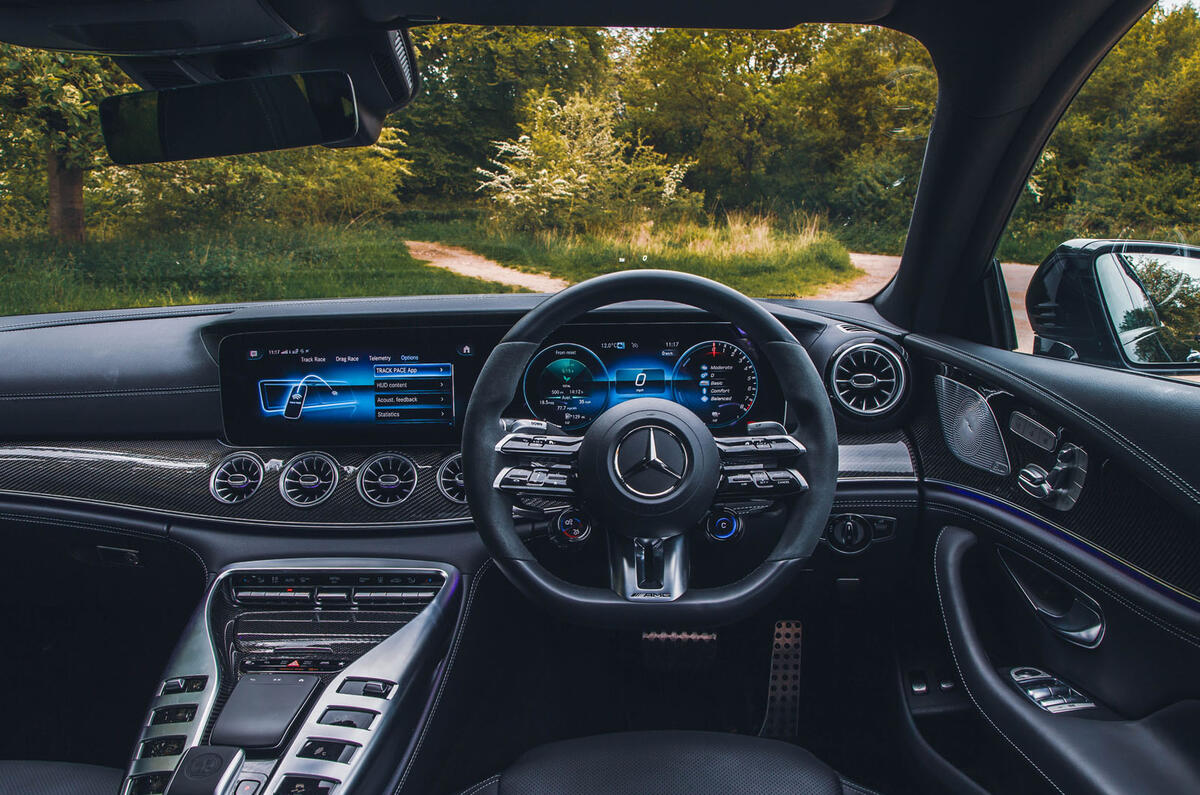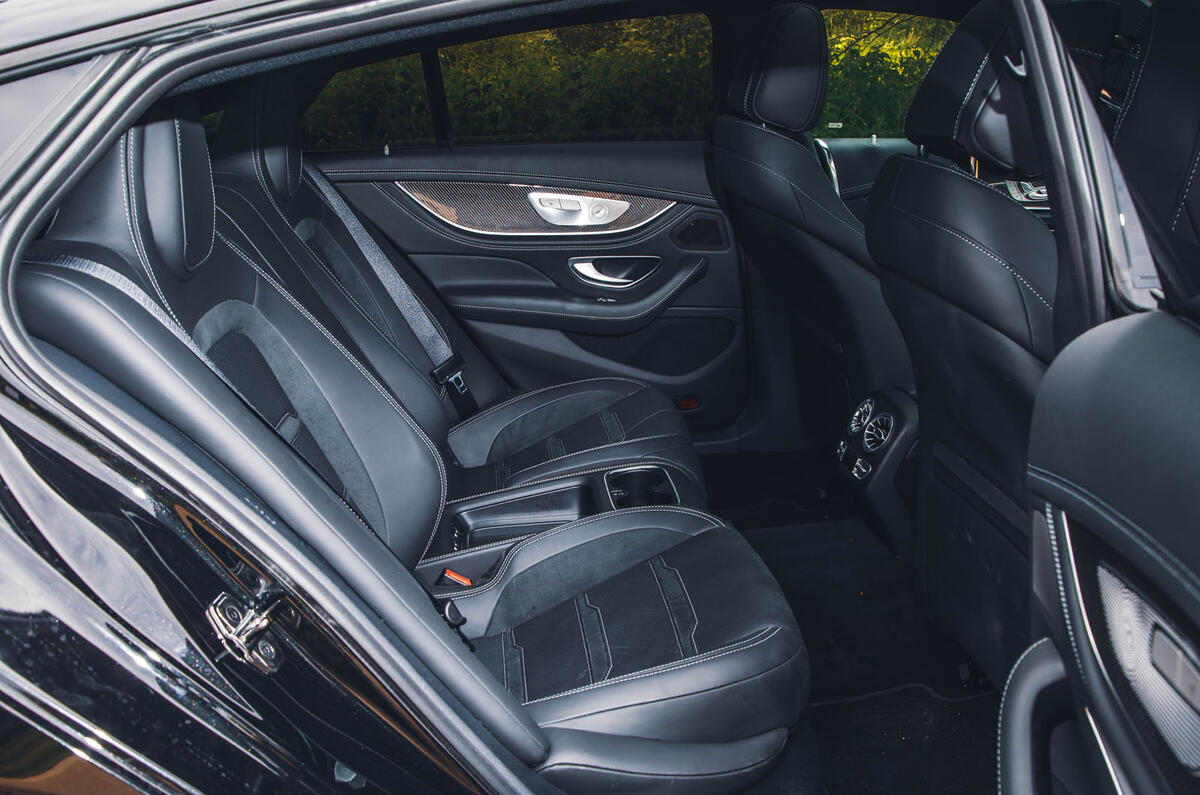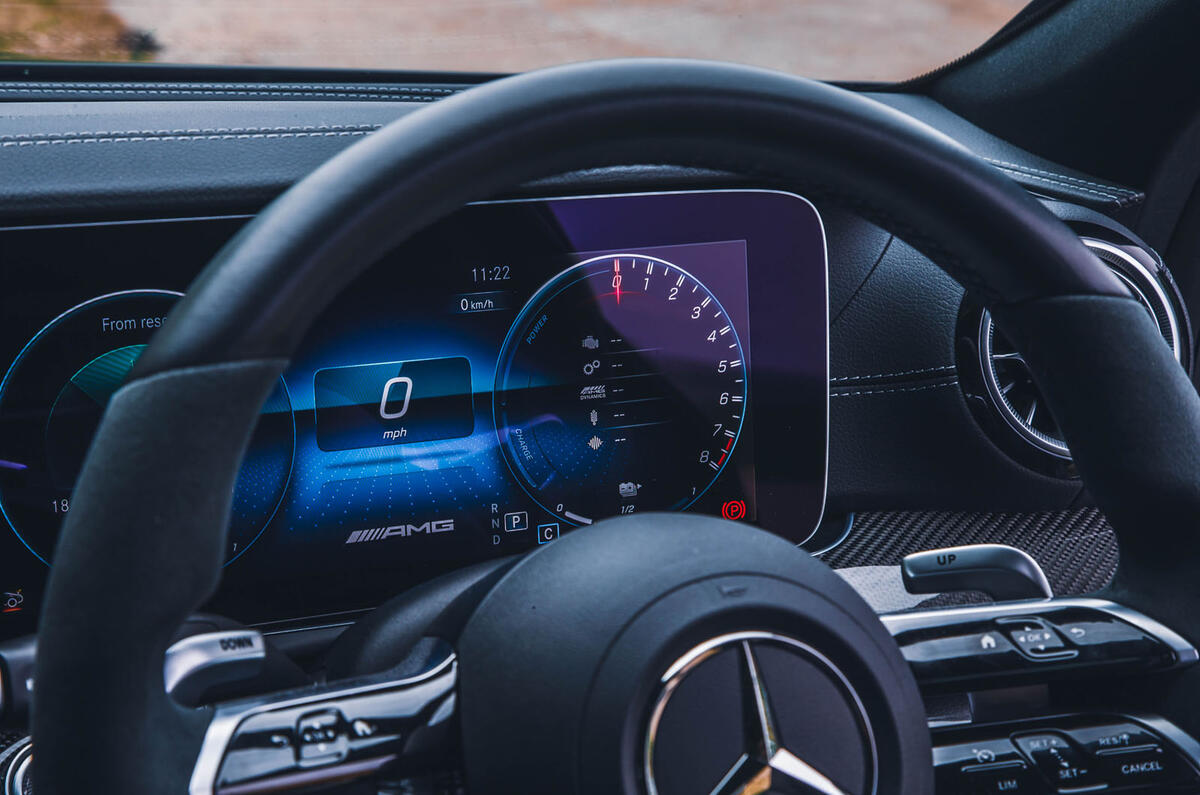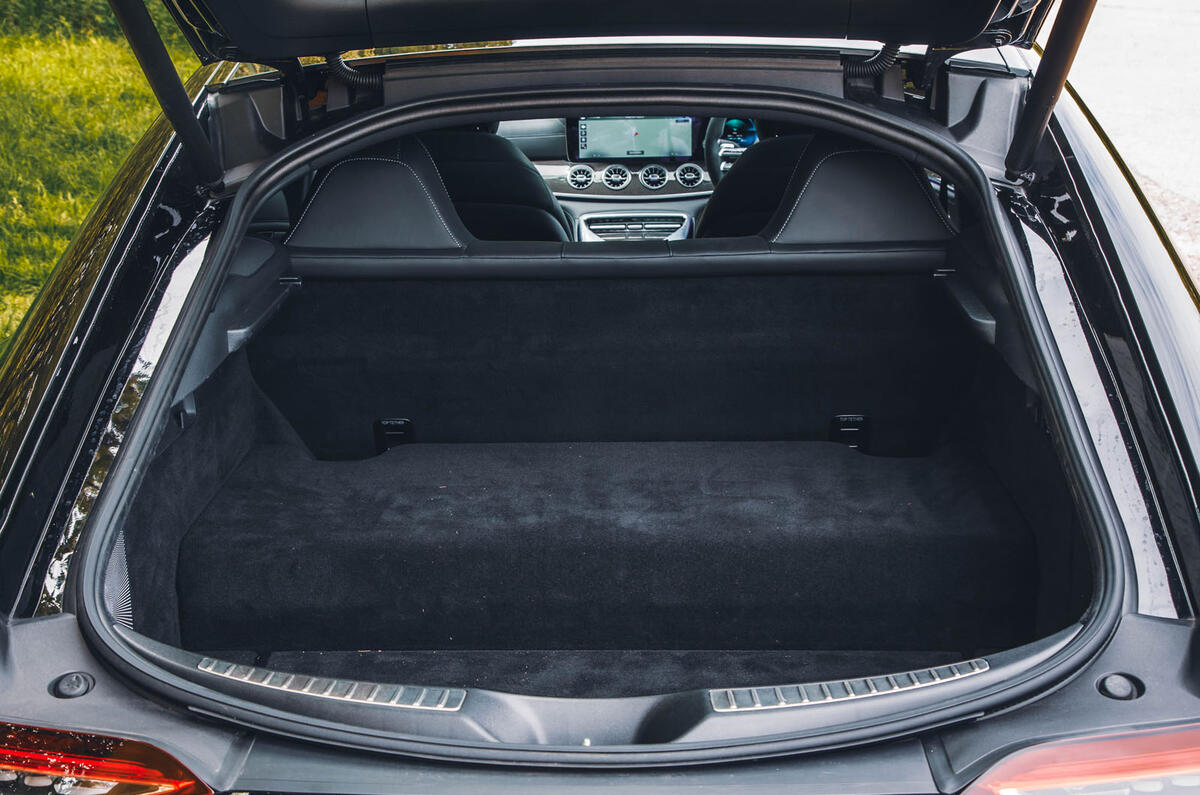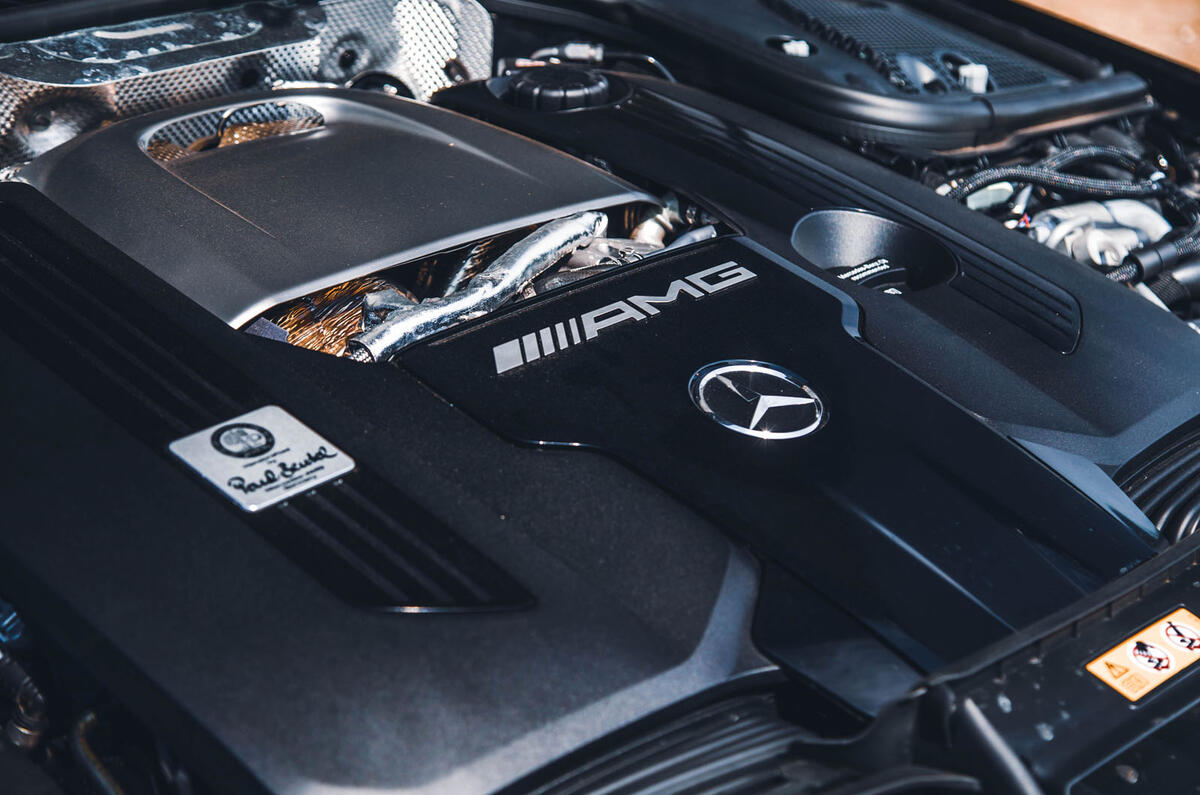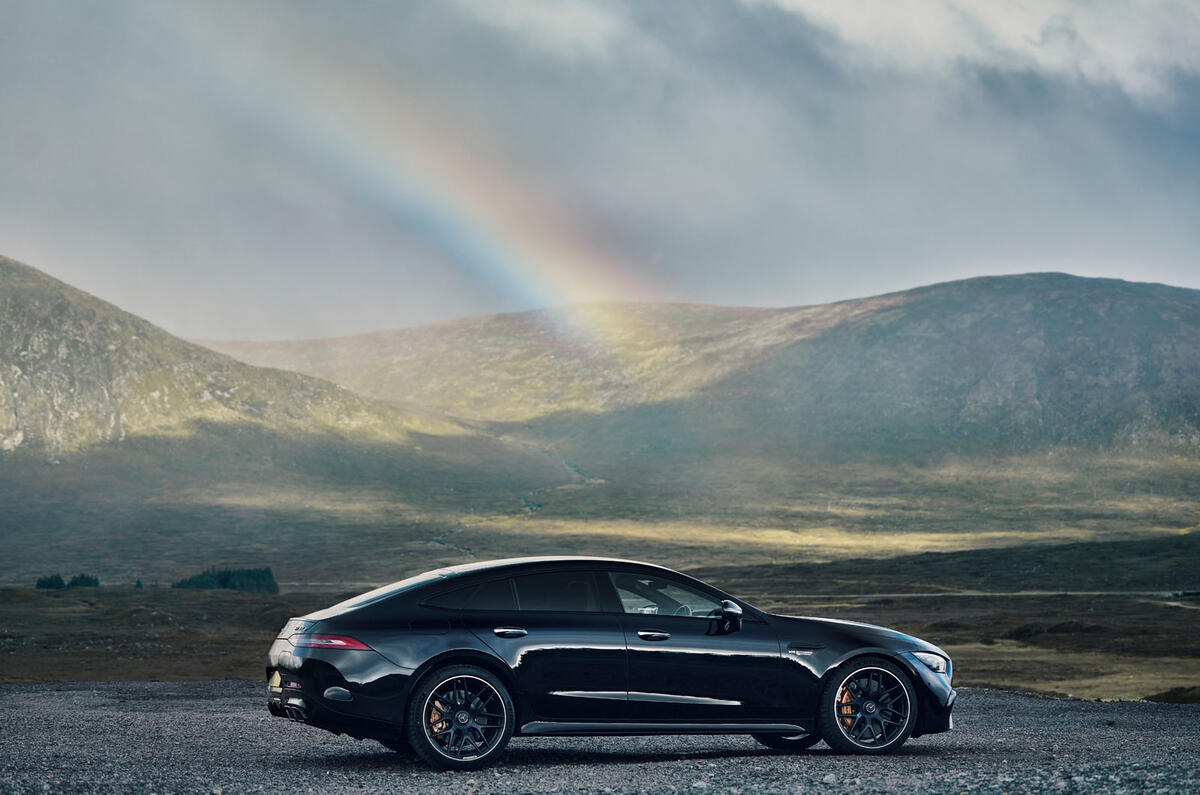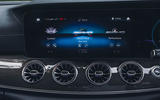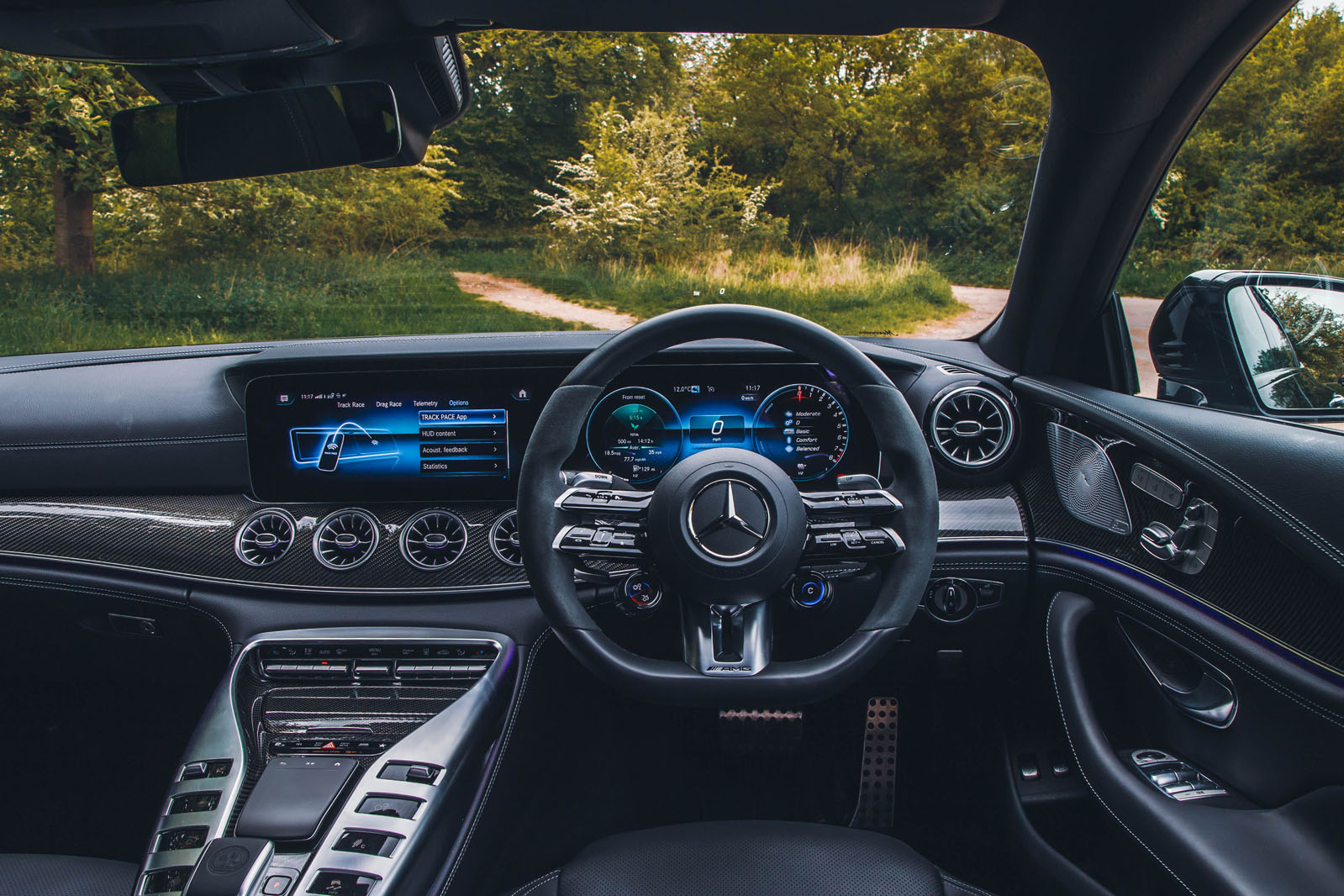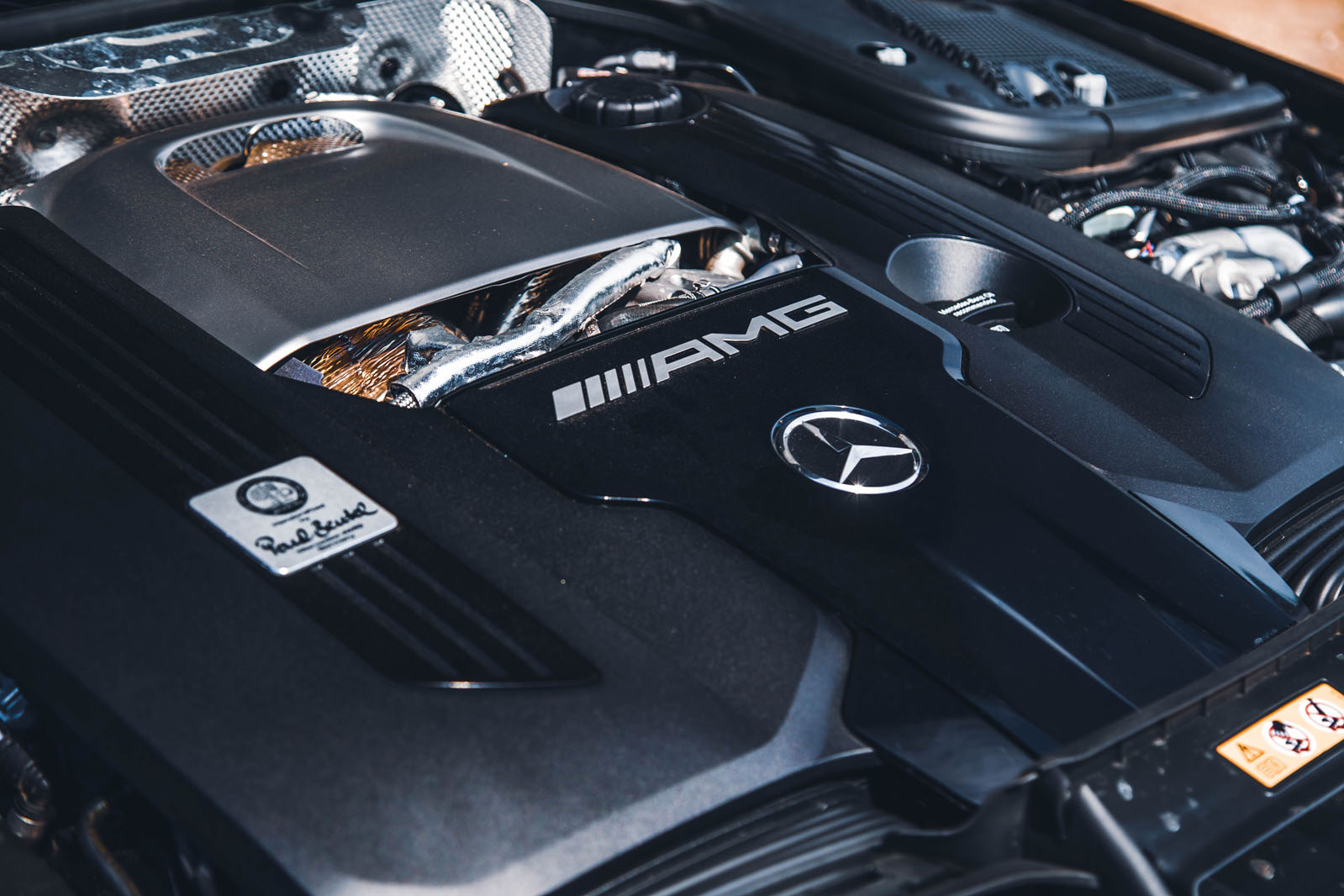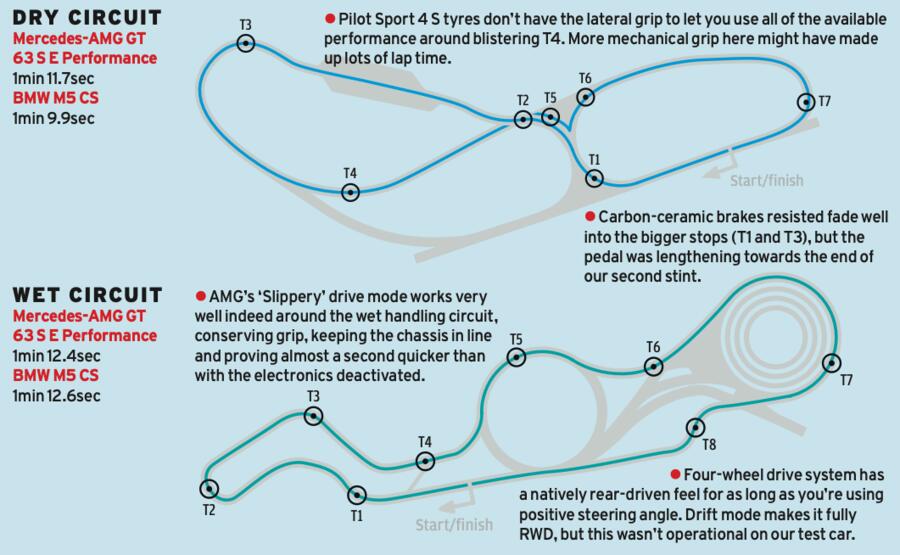You expect audible drama when you hit the starter button of an 831bhp Mercedes-AMG – but initially that’s not what you get from this one. A synthesised electric pulse signals the readiness of the GT’s hybrid powertrain, and then, in its default operating mode, the car moves off quietly under electric power, and only rouses its V8 when you begin twiddling the driving mode knobs.
The breadth of ability that Affalterbach intended for the car, with operating modes ranging from Comfort and EL (for electric) at one end of the spectrum through to Sport+, Race and even Drift at the other, is vast. But, while the GT’s dynamic versatility is both ambitious and impressive in itself, it doesn’t take long to note some compromises in its fine detail.
At low and medium speeds in Comfort mode, for example, you will notice occasional snatchiness from its gearbox and hysteresis in its low-speed throttle response (the hybrid system boosting strongly and suddenly as you tip into the power sometimes, but less so at others).
You will also notice quite a lot of high-frequency noise coming from the rear-mounted high-voltage electronics. Manifesting like a quiet and intermittent but nonetheless distracting high-pitched whining, it is unmistakably what an NVH engineer would describe as ‘noise’ rather than ‘sound’ – and certainly the sort of thing you would expect a luxury GT to filter out.
Select Sport or Sport+ mode and at least some of the V8 thunder you expect of an AMG super-saloon materialises. But when it comes, the GT’s combustion engine isn’t bristling with audible character. Hear it from outside the car, especially when close to the radiator grille, and it’s mostly made up of the whirring of belts and cooling fans and the sucking of turbos (although AMG’s sports exhaust makes it sound a lot fruitier from the rear).
On outright performance, of course, the car doesn’t miss the mark – it absolutely pulverises it. Needing only 2.9sec to hit 60mph from rest, 6.6sec to hit 100mph, 10.9sec for the standing quarter mile and just 2.5sec to get from 30-70mph through the gears, the GT 63 S E Performance beat almost every performance benchmark laid down by the five-star BMW M5 CS we tested in 2021.
It feels like the savage it clearly is under full-bore acceleration: massively thrusty at medium crank speeds, always responsive and still reasonably free-revving beyond 6000rpm. Although, while it avoids any kind of peaky power deliver, it’s plainly a car propelled by a highly stressed combustion engine – not the fizzing, free-revving V8 of some AMGs.
Remain in the sportier driving modes, however, and the car’s oddest drivability quirk might be the way that it reserves what feels like half of the boost provided by its electric rear axle as a kind of ‘push to pass’ feature, the power accessible only by pushing the accelerator pedal beyond its kickdown detent.
This might make sense if you want to make the driver feel like an F1 megastar on a qualifying lap, but the net effect on the road is really only to complicate the driving experience. On track, it makes the car more of a challenge to drive at the limit than it really needs to be.





